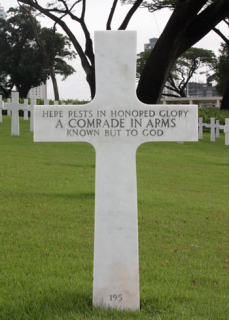Arlington National Cemetery loses track of what soldiers are buried where, Dover AFB’s mortuary is caught throwing body parts in a landfill, veterans needing medical assistance stuck in a scandalous backlog of neglect. It’s not as if the nation’s soldiers — dead and alive — needed another reminder of the disconnect between the public posturing of support for those who served and the occasional incompetence that betrays it.
But the ProPublica/NPR investigation into the agency in charge of making sure no soldiers are left behind appears at first blush to be one.
 The Joint Prisoners of War/Missing in Action Accounting Command has stuck with an outdated approach to identifying the remains of unknown soldiers, even as science has advanced into a new century, the investigation revealed, while telling the story of a soldier who died after the Bataan death march, whose family has worked to identify which mass grave he’s buried in, and who have run into the bureaucratic stone wall trying to get him home.
The Joint Prisoners of War/Missing in Action Accounting Command has stuck with an outdated approach to identifying the remains of unknown soldiers, even as science has advanced into a new century, the investigation revealed, while telling the story of a soldier who died after the Bataan death march, whose family has worked to identify which mass grave he’s buried in, and who have run into the bureaucratic stone wall trying to get him home.
Private Arthur “Bud” H. Kelder died in November 1942. His cousin, John Eakin, has worked tirelessly to locate where he’s buried, going so far as to provide Pvt. Kelder’s DNA from an envelope he licked.
Joshua Hyman, the head of the University of Wisconsin-Madison’s DNA Sequencing Facility, described it as a “piece of cake.”
Then the family ran into the bureaucrats of the U.S. military who don’t want to dig up a grave unless they’re sure it contains Pvt. Kelder. But, of course, they can’t be sure unless they use DNA as proof, which they don’t. And they can’t be sure until they open the grave, which they won’t.
(J-PAC science director Tom) Holland approves just a handful of the disinterment requests that come across his desk. Cases go first to the head of the disinterment unit, who dismisses about 80 percent of them, Holland said. The rest go to Holland, who said he rejects another 80 percent. That means only 4 percent of cases considered for disinterment move forward.
Holland said he is “handcuffed” by a 1999 Pentagon policy that requires a “high probability of identification” before exhumation.
There is disagreement within the military about whether the policy is still in effect. Officials at DPMO, which frequently squabbles with J-PAC, say it isn’t.
“It’s J-PAC’s choice,” said Navy Capt. Doug Carpenter, chief of accounting policy for DPMO. “How they choose to hold themselves accountable for disinterment is up to J-PAC, and they do a fine job.”
Regardless, Holland has the power to define the exact standard for disinterment. He has imposed strict parameters for how many people a set of remains could possibly be before moving forward to dig them up: typically, no more than five. He will not lower the threshold even in instances where comparison DNA could be used to identify disinterred remains.
Pvt. Kelder’s family is suing the government, which is working tirelessly… to get it dismissed.
The comments area of the joint investigation sound different themes. On the ProPublica site, commenters are dismissing the piece as flawed because it focuses only on one family. On the NPR site, the discussion is about why the nation is “wasting” a million dollars per identification.
